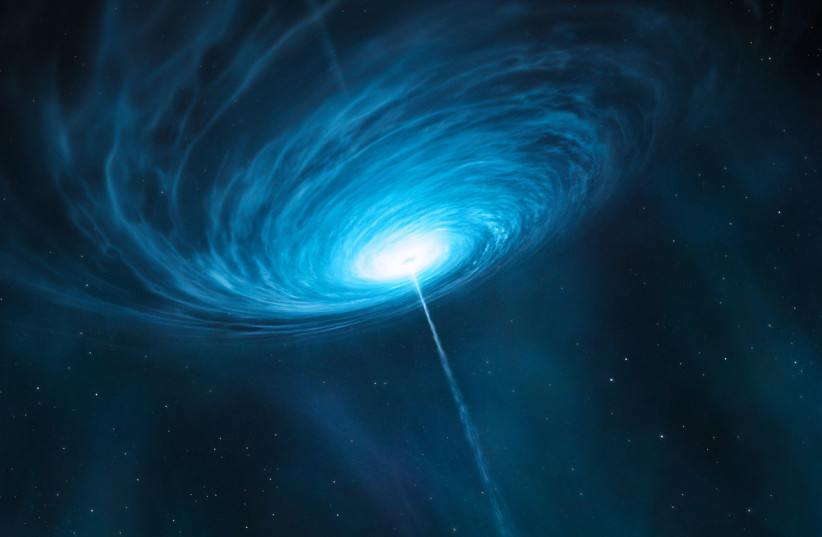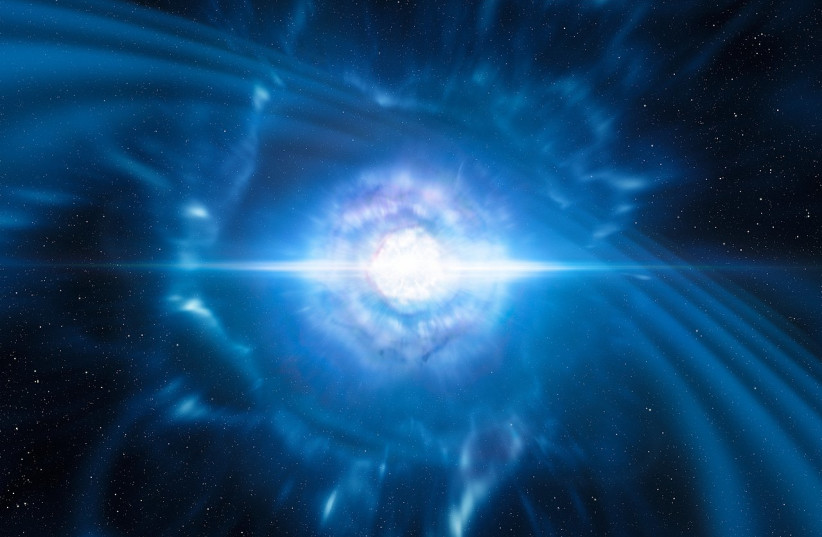A new Israeli experiment is set to head to space for a new kind of gamma-ray detection that can help identify radiation from high-energy explosions in far-away galaxies.
The experiment, called the Gamma-ray Burst Localizing Instrument (GALI) and developed by Profs. Ehud Behar and Shlomit Tarem of Technion-Israel Institute of Technology, is one of the 35 experiments being taken by Israeli astronaut Eitan Stibbe to the International Space Station (ISS) for the Rakia mission.
<br>What is gamma-ray radiation? Where does it come from?
Also known as γ-rays, gamma-ray radiation can originate from a number of sources, such as radioactive decay, lightning strikes or artificial fission reactions.
But gamma radiation differs from other kinds of radiation.

Of the many types of waves that exist, there are a few kinds of radiation, these include ultraviolet (UV) and X-rays, both of which are visible on the electromagnetic spectrum.
Every type of wave has a wavelength, but of those, gamma rays tend to have the shortest, while also having the highest amount of photon energy.
Further, they are very dangerous. As a type of ionizing radiation, gamma rays are hazardous to human life. Indeed, they can easily pass through the human body and from many forms of radiation protection. Even mirrors are unable to reflect them.
A large amount of gamma-ray radiation comes from space. But how exactly do they form in space?
This has often been unclear and disputed. Some have pointed to pulsars, large neutron stars that produce beams of radiation, and others point to quasars, an active supermassive black hole-powered galactic nucleus.
Others suggest it could happen when a star collapses, which would form a massive burst of energy and elements known as a supernova.
It was also widely thought that short gamma-ray bursts originate when two neutron stars merge together, which would also cause a massive explosion. But this has only ever been identified as happening once before, back in 2017.

Scientists need a new way to detect the origins of gamma-ray bursts. And that is where GALI comes in.
The GALI experiment is a detector with hundreds of small crystals arranged in a 3D pattern. The relative signal received in each crystal will allow astronomers to reconstruct when this kind of eruption happens and track the location.
In simpler terms, when an explosion from the collapsing of a star causing a supernova or the merging of neutron stars happens, GALI will help tell us where it happened.
"Our instrument is based on a compact arrangement of many very small scintillators that, depending on the direction of the gamma rays, hide each other so that each one gets a different number of photons," Tarem explained.
As explained by Technion PhD student Roi Rahin, this is all made possible by using silicon photomultipliers, though they have yet to be tested in space before.
<br>Why identify gamma-ray burst origins?
Identifying the explosions that are the origins of gamma-ray bursts is important for several reasons.
Firstly, identifying the explosions could lead to us learning more about the bursts themselves.
"A big success would be if we learned something new about gamma-ray bursts and their underlying causes, thereby learning something new about the universe we live in," Tarem said.
However, identifying the source of explosions could also help study more about this source itself, rather than just gamma-ray bursts.
According to Tarem, identifying the sources will let astronomers direct telescopes to properly observe the explosion. Then, they could study it and link it to other events, such as gravitational waves, which are also released by these explosions.
But its potential applications aren't just limited to space.
"We found out that the system we developed is also interesting to people outside the world of astrophysics," Behar explained.
"Our collaborators in the Nuclear Researcher Center Negev, for example, want reliable and accurate systems that detect radioactive sources from afar."
Essentially, these collaborators see GALI as a reliable and accurate system to detect radioactive sources from afar. With the right adjustments, GALI would be able to do just that.
In addition, it will also be able to provide information about what the source is that is emitting the radiation in the first place, which in turn can help plan the right kind of solution to the problem.
A joint US patent has been submitted on using GALI in this context.
